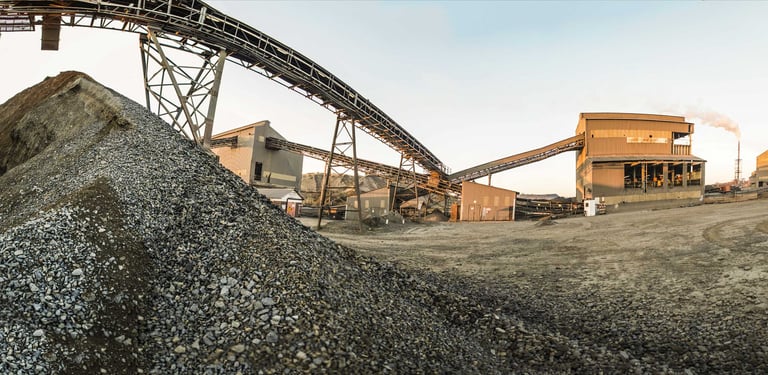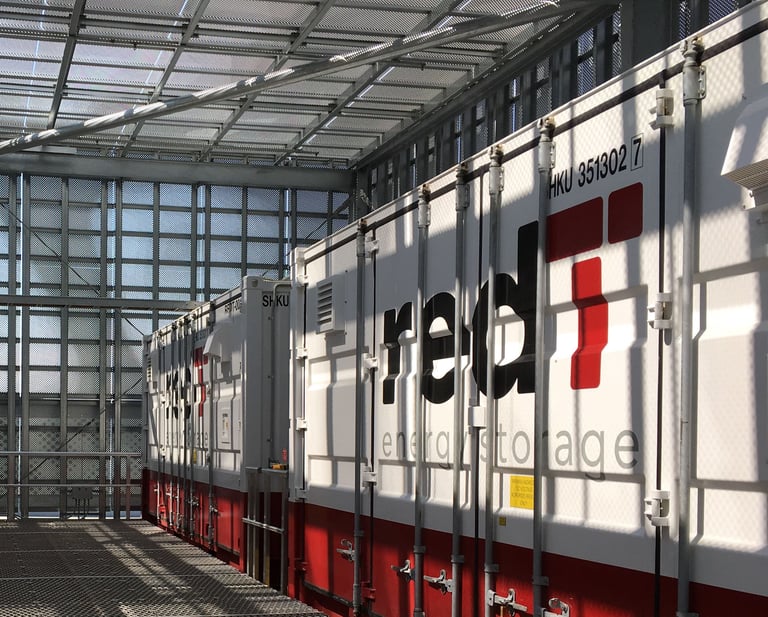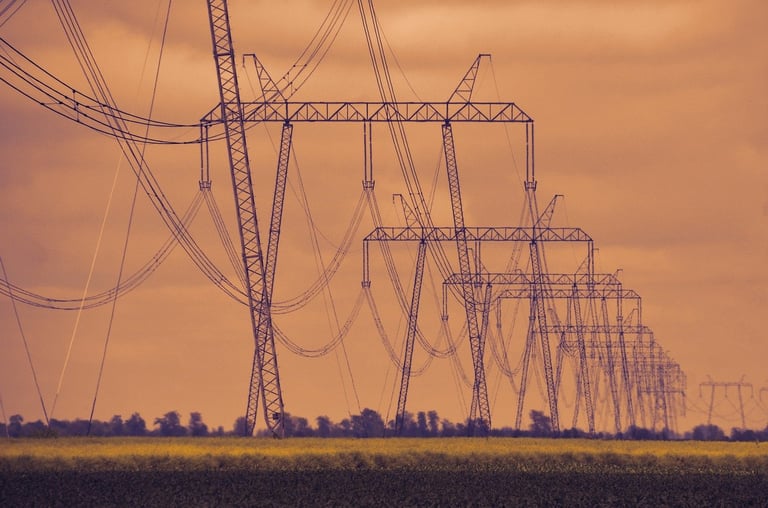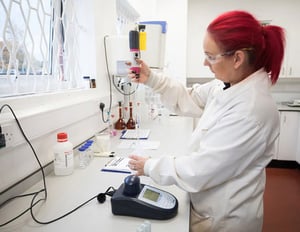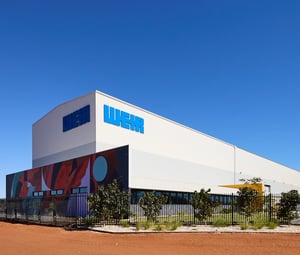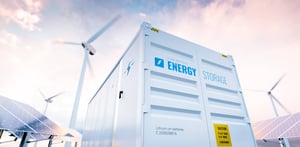Bushveld Minerals (LON: BMN), the AIM listed, integrated primary vanadium producer with ownership of high grade vanadium assets, today provided an operational update for its 84%-owned energy subsidiary, Bushveld Energy Limited.
Q3 Highlights
· Preparatory work for the completion of battery commissioning for the Eskom vanadium redox flow battery project recommenced at site and is expected to complete in December 2018;
· Bushveld Energy and UniEnergy Technologies awarded grant by the United States Trade and Development Agency, in support of the Eskom project and energy storage industry in South Africa;
· Environmental Impact Assessment for East London Industrial Development Zone electrolyte production facility has commenced and is expected to be completed in H1 2019;
· Discussions with potential electrolyte customers ongoing with Bushveld Energy expecting to supply samples in coming months.
Mikhail Nikomarov, CEO of Bushveld Energy, commented:
“The third quarter of this year and events following immediately afterwards, have proven beyond doubt that the market for battery storage in both South Africa and Africa overall is significant and immediate. Bushveld Energy has long maintained the attractiveness of this market, especially for the long-duration and high-volume daily utilisation applications that are ideal for VRFBs. The knowledge gained by our team in deploying a system with Eskom and designing and building an electrolyte facility will continue to give Bushveld Energy a competitive advantage in supplying into this growing market. Our business plan, anchored in a low cost scalable primary production platform, will allow us to maximise value for Bushveld and its shareholders along the VRFB value chain, and therefore realise the Company’s vision of a deeply vertically integrated vanadium platform.”
Operational highlights for Bushveld Energy projects:
Eskom VRFB project
Preparatory work for the completion of battery commissioning for the deployment of the maiden VRFB from UET with the national utility, Eskom, in South Africa recommenced at site and is due to be completed before the start of the South African holidays in December 2018. The system is co-owned by Bushveld Energy and the Industrial Development Corporation.
The delay from the original timeline for the project, which saw delivery of hardware at the end of Q2 2018, resulted from the unexpected contamination of the electrolyte that occurred during the filling stage, which was discovered during system commissioning that made the VRFB inoperable. Without a mixed-acid electrolyte facility in South Africa, filtration of the electrolyte in-country was not possible. A remediation strategy was implemented in August 2018 to replace the electrolyte and certain contaminated components of the system. Site work for remediation began in October 2018 and commissioning restarted at the end of November 2018.
The USTDA awarded a grant to UET and Bushveld Energy in support of the Eskom project and the development of future applications for energy storage and VRFBs in South Africa. USTDA’s approval process included external technical verification of the technology and the proposed project, indicating confidence in the long-term viability of both UET’s technology and expected opportunities for energy storage in South Africa.
Electrolyte production facility
The EIA process for the ELIDZ site is advancing with completion expected in the first half of 2019. This process needs to be completed before the construction of the electrolyte facility commences.
Test work on the project has been performed by two external parties in the conversion of vanadium feedstock from Bushveld Vametco into vanadium electrolyte, yielding positive results for both single and mixed-acid electrolytes. The results are preliminary; however, Bushveld Energy expects to be able to start supplying electrolyte samples to potential customers in the coming months. These activities are important in verifying Bushveld’s objective of using an intermediary vanadium product from its mining and processing activities to reduce the cost of conversion into electrolyte. Such efforts are an example of the merits of Bushveld’s vertically integrated strategy.
The detailed process design within the facility will follow the process flows created through the aforementioned test work. The capital expenditure required to build the electrolyte plant is approximately $10 million.
Post Q3 activities – market development
In October 2018, the World Bank Group announced a $1 billion programme to support the deployment of energy storage in low to middle income countries. The programme is expected to mobilise a further $4 billion in donor funding and private sector investment to deliver 17,500 MWh of energy storage in these countries by 2025. This announcement is not only an excellent development for energy storage globally, but for Bushveld Energy and its market focus on Africa. With typically over 1/3 of World Bank Group funding directed to sub-Saharan Africa, the programme will likely aim to deliver 5,000-6,000 MWh of storage in Africa alone, or an average of 1,000 MWh per year. Similarly, most of the storage deployed for future projects under the programme will be to ensure greater integration of renewable energy, applications that require long duration, daily storage, which fits into the technical and commercial superiority of the VRFB technology;
In August 2018, the South African Department of Energy (DoE) issued a draft Integrated Resource Plan (“IRP”) for South Africa. As a member of the South African Energy Storage Association (SAESA), Bushveld Energy supported SAESA’s engagement with the DoE, including formal commentary on key topics. Three key topics included:
i. to ensure that energy storage facilities do not require generation licences;
ii. to permit technologies such as energy storage to replace allocations for other technologies, such as 9,000 MW of natural gas capacity for peak-time generation, where storage is able to provide the same system benefits at equal or lesser cost; and
iii. to ensure that energy storage co-located with generation facilities does not lead to double counting of capacity and only the net output capacity of such co-located facilities or mini-grids is calculated.
The commentary period ended in October with the final IRP expected in early 2019, leading to significant advancement for the South African power sector, including energy storage.
Post Q3 activities – overview of Bushveld Energy Business Plan
The business plan for Bushveld Energy focuses on five types of revenue-generating activities in the midstream and downstream segments of the vanadium value chain. These activities have a low capital requirement relative to the mining business. These five activities broadly include:
1. Electrolyte manufacturing, including building and operating a chemicals plant that purifies vanadium feedstock and converts it into a liquid electrolyte. The electrolyte is sold to VRFB companies or direct users / buyers of VRFB systems;
2. Renting (or leasing) vanadium electrolyte, which is a new product under development. In the product, Bushveld Energy can retain ownership of electrolyte and rent it to the VRFB user. The product is unique to VRFB energy storage technology and essential not just to cover vanadium price peaks, but to also implement a long-term pricing strategy which reduces the upfront capital cost to make VRFB one of the most commercially competitive energy storage technologies in the market;
3. Assembly of VRFBs through an investment in the construction of an assembly plant for a VRFB product (that will be operated by another party). This activity could involve direct investment into a VRFB company or companies that would own the facility as well as the technology;
4. Direct selling of VRFBs in African markets as a value-adding local firm. In addition to identifying opportunities suitable for VRFB energy storage, this activity includes developing local logistics chains covering importation, transport, installation and maintenance of the VRFBs and key components (e.g. electrolyte);
5. Developing and investing in African energy storage projects, which goes beyond purely identification of suitable sites and extends to defining the economic business case for VRFB installations. The activity also includes designing the technical and commercial structure of projects that use VRFBs. Finally, the activity includes direct equity investment into such projects.
Implementation of these five activities will continue to follow principles of strategic partnerships and implementation only where value can be created. Implementation of many of these activities will be done in collaboration with external parties, including development agencies, funders, renewable energy developers and energy storage component providers. By design, all activities will rely to a significant degree on capital from outside of Bushveld Minerals.
Summary of Future Objectives
|
Objective |
Status |
|
Deliver the first VRFB project with Eskom in CY 2018 |
On-track for battery to be operational initially by end of 2018 |
|
Grow the VRFB project pipeline across Africa |
On-track |
|
Supply electrolytes to downstream stakeholders in the Vanadium Battery Supply Chain |
On-track |
|
Develop an electrolyte manufacturing plant, with minimum capital expenditure |
On-track |
|
Design and implement a vanadium electrolyte rental product to reduce upfront costs of VRFB and accelerate adoption |
Initiated |



